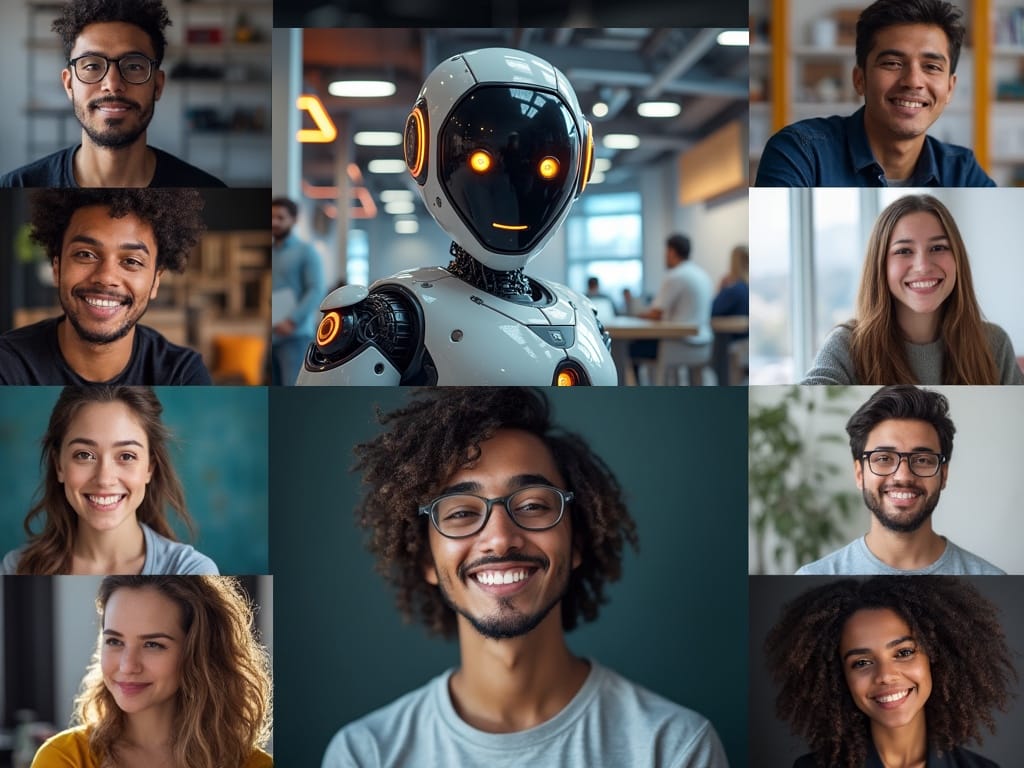5 Years into the Future: Planning for Responsive Roles Now
UX professionals can lead in an AI-augmented future, shaping user experiences and business strategies. How? By exploring and evolving with AI: from incremental changes in process innovation, to co-designing with AI, and finally to extreme disruption where an AI runs its own business.

Imagine a world where your next co-designer isn’t human but an AI, analyzing vast amounts of user data and predicting what users need before they even realize it themselves. This isn’t a far-off concept but a fast-approaching reality. In today’s problem-solving economy, a compelling use case can quickly evolve into a thriving business, as demonstrated by companies like Airbnb, Amazon, and SpaceX.
As automation and AI technology gain prominence, UX professionals must prepare for a future where their roles extend beyond screens and traditional design. Product owners and business leaders will increasingly need strategic support from UX teams to craft the right balance between business objectives and user needs.
In this shift, User Experience becomes not just a part of the design process but at the heart of an AI-augmented, responsive business landscape. The role of UX now expands to explore and enhance the experiences of everyone involved in delivering a business solution. And as AI technology evolves from mere knowledge repositories to near-autonomous agents, there's a potential shift from traditional profit-driven models to mission-centred enterprises focused on solving market problems.
Over the next five years, UX professionals will need to plan for three levels of AI integration: incremental change, disruptive co-design, and extreme disruption. Let's delve into each of these stages and consider the responsive roles UX designers can adopt as AI continues to evolve.
Planning for Incremental Change: Process Innovation with AI
As AI agents become more sophisticated, they'll take over the more tedious aspects of UX work, like market analysis and the extraction of actionable insights from vast data sets. Picture AI-powered dashboards not just presenting data, but actively sifting through user feedback, identifying emerging patterns, and spotting nascent business opportunities. These systems could then autonomously initiate A/B tests to validate their insights, all without human intervention.
In this evolving landscape, UX designers transition into the role of business insight architects. They'll harness AI's unprecedented data processing capabilities to breathe life into transformative ideas. By tapping into rich, in-house datasets, UX teams can orchestrate hackathons or innovation sprints, where AI-driven data exploration becomes the norm.
These events will not only uncover new opportunities but will also streamline the innovation process. AI's insights will directly inform product owners, revealing untapped areas for development and allowing UX professionals to redirect their efforts. No longer mired in repetitive tasks, they can now elevate their focus to creative problem-solving and strategic innovation, crafting solutions that align closely with both user needs and business goals.
Planning for Disruption: Co-Designing with AI
Envision an AI not just as a tool but as your co-designer, capable of not only harvesting user data but transforming it into insights for crafting situationally aware, adaptive interfaces. This is where AI's disruptive potential truly shines—anticipating user behaviors and dynamically tailoring UI components to fit real-time user interactions.
In this co-design environment the UX professional become orchestrators of this AI partnership. Working closely with the AI agent to interpret complex data patterns, identify emerging user behavior trends, and refine AI-suggested UI modifications. A collaboration that ensures the recommendations are not only technologically sound but also resonate with human-centric design principles.
- Personalization at Scale: The outcome of this partnership is an unprecedented level of personalization in UX. Interfaces will not just react; they'll predict and evolve with the user's needs, offering a bespoke experience that feels intuitive and foresightful.
- AI Integration in Daily Operations: The AI agent integrates seamlessly into daily business activities, actively adjusting processes to optimize organizational performance. Imagine an AI that can preemptively modify workflows, assess a business's operational capacity in real-time, and streamline user interactions in ways that preemptively address or mitigate potential issues, thereby enhancing user satisfaction and reducing friction.
- Strategic Design Oversight: This evolution requires UX designers to elevate their focus from the granular details of design to strategic oversight. They will guide the overarching narrative of user experience, ensuring that AI-enhanced interfaces remain accessible, engaging, and aligned with both user expectations and business objectives.
In this disruptive phase, UX professionals are no longer just designers; they become stewards of an adaptive, intelligent design ecosystem, where their insight into human behaviour complements AI's analytical prowess to deliver deeply intuitive user experiences.
Planning for Extreme Disruption: Autonomous AI-Driven Businesses
At the far end of the spectrum lies a future where an AI Agent not only supports businesses but autonomously creates and manages them. Imagine an AI agent as a type of entrepreneur, or as a co-founder of an enterprises. Using a framework like those of a Distributed Autonomous Organization (DAO), it would be possible for an AI agent to be as legitimate as any large corporation. Here, they might initiate ventures with objectives beyond profit, focusing on social impact, innovation, or solving complex market inefficiencies in scenario where UX professionals participate through:
- Cause-Driven Missions: These AI entities could prioritize 'cause over capital', leading initiatives that address broader societal challenges or gaps in the market. UX designers would then be pivotal in ensuring these missions are communicated effectively, creating interfaces and experiences that resonate with cause-driven objectives.
- Co-Creation and Market Adaptation: As co-creators, UX professionals would work alongside AI to not only interpret data but also to set the strategic direction for how these AI systems engage with the market. They would help navigate the organization through market shifts, ensuring that AI-led initiatives remain relevant, adaptive, and beneficial to both the economy and society at large.
- Growth Through Incentivisation: Within a DAO, AI could dynamically adjust incentives to optimize human contribution towards the growth of the organization. It would use vast amounts of data to understand motivational factors, professional development paths, and even personal growth, aligning them with the DAO's goals.
- Human-AI Synergy: In this extreme disruption, the role of the UX designer expands into that of a 'synthesis curator', where they ensure the balance between technological advancement and human values. They would ensure that while AI drives efficiency, innovation, and scalability, the human element of empathy, ethics, and emotional intelligence isn't lost.
In this new world, UX professionals serve as the essential human interface of these AI-driven entities. They would not just design interfaces but act as ambassadors or liaisons, interpreting AI decisions for human stakeholders, onboarding users, and managing community engagement. Their role would involve translating the digital intelligence of AI into tangible, human-centred services and experiences.
This vision requires UX professionals to evolve into strategists of human-AI collaboration, where their expertise in understanding human behaviour becomes invaluable in shaping how AI can best serve humanity, not just through functional user experiences but through meaningful contributions to societal well-being.
Conclusion: Embracing the UX Renaissance in an AI-Driven Era
The next phase of business isn’t just about change; it’s a renaissance for UX professionals—a future where AI not only assists but also empowers us.
As the discipline transitions to this new horizon, UX professionals have an opportunity to become architects of AI-enhanced realities. This shift calls for a perspective beyond aesthetics, evolving into a role where UX designers transcend traditional boundaries to become strategists, orchestrators, and co-creators in an AI-augmented world. Together we can redefine what forward-thinking businesses can achieve, moving beyond the screens and embracing a broader, more integrated vision.
As we collectively navigate this exciting frontier; Subscribe to the Humanjava newsletter and stay up-to-date on the latest insights and discussions on the evolving world of UX. Dive deeper with our UX-MBA tagged articles, where we continue to explore the intersection of technology, business, and design. And if your project needs a UX partner / consultant, reach out to Vergel at Humanjava.
Together, standing at this crossroads, we have the unique chance to integrate human insight with machine intelligence. Our mission isn’t just to adapt to AI’s growing capabilities but to proactively shape how these technologies elevate human experiences. Let’s embrace this responsive future together, where UX leads with innovation, empathy, and strategic foresight—contributing to a marketplace driven by connection, purpose, and possibility.





